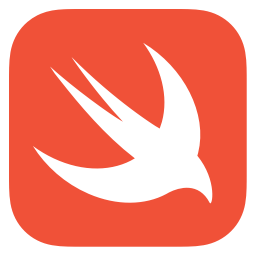 June 14, 2021
June 14, 2021
SwiftUI: Composable Button Styles
One frustrating/annoying things about SwiftUI Buttons for me has been the
mechanism for styling them. In order to get information about the state of the
button (e.g. if it is pressed, not pressed) you have to build a struct
that implements the ButtonStyle protocol. This would generally look something
like the following.
struct MyColoredButtonStyle: ButtonStyle {
let pressedBackgroundColor: Color = ...
let notPressedBackgroundColor: Color = ...
func makeBody(configuration: Configuration) -> some View {
return configuration.label.background(configuration.isPressed ? pressedBackgroundColor : notPressedBackgroundColor)
}
}
Then to use it you simply do the following:
Button(...).buttonStyle(MyColoredButtonStyle())
The Problem
This is great and all until you decide that you also want your button to have
an animated scale effect tied to the isPressed state as well. You might think
you could just create a new MyAnimatedScaleButtonStyle struct and tack it on
like so.
Button(...)
.buttonStyle(MyColoredButtonStyle())
.buttonStyle(MyAnimatedScaleButtonStyle())
Sadly SwiftUI only takes the first button style in the chain and applies it. The rest are ignored. This means you basically have to create a super unique button style for each particular use case and have all your styling slammed into it.
A Solution (A Micro Framework)
Taking from Functional Programming we can effectively use Function Composition to facilitate making a tiny lightweight framework to facilitate building composable button styles.
typealias ButtonStyleClosure<A: View, B: View> = (ButtonStyleConfiguration, A) -> B
precedencegroup ForwardComposition {
associativity: left
}
infix operator >>>: ForwardComposition
func >>> <A: View, B: View, C: View>(
_ f: @escaping ButtonStyleClosure<A, B>,
_ g: @escaping ButtonStyleClosure<B, C>
) -> ButtonStyleClosure<A, C> {
return { configuration, a in
g(configuration, f(configuration, a))
}
}
struct ComposableButtonStyle<B: View>: ButtonStyle {
let buttonStyleClosure: ButtonStyleClosure<ButtonStyleConfiguration.Label, B>
init(_ buttonStyleClosure: @escaping ButtonStyleClosure<ButtonStyleConfiguration.Label, B>) {
self.buttonStyleClosure = buttonStyleClosure
}
func makeBody(configuration: Configuration) -> some View {
return buttonStyleClosure(configuration, configuration.label)
}
}
extension Button {
func composableStyle<B: View>(_ buttonStyleClosure: @escaping ButtonStyleClosure<ButtonStyleConfiguration.Label, B>) -> some View {
return self.buttonStyle(ComposableButtonStyle(buttonStyleClosure))
}
}
This allows us to define custom ButtonStyleClosure functions. The follow are
just a few examples. But the idea is that you can create whatever of these
ButtonStyleClosures you want and then use Function Composition to combine
them.
struct ButtonStateColors {
let pressed: Color
let notPressed: Color
}
func scaledButtonStyle<A: View>(_ configuration: ButtonStyleConfiguration, _ view: A) -> some View {
return view
.scaleEffect(configuration.isPressed ? 0.98 : 1)
.animation(.spring(response: 0.2, dampingFraction: 0.5, blendDuration: 0.5))
}
func roundedButtonStyle<A: View>(_ configuration: ButtonStyleConfiguration, _ view: A) -> some View {
return view.cornerRadius(8)
}
func defaultPaddingButtonStyle<A: View>(_ configuration: ButtonStyleConfiguration, _ view: A) -> some View {
return view.padding()
}
func coloredButtonStyle<A: View>(_ configuration: ButtonStyleConfiguration, _ view: A) -> some View {
let backgroundColors = ButtonStateColors(
pressed: Color("cta_button_highlight_color"),
notPressed: Color("cta_button_color"))
let foregroundColors = ButtonStateColors(
pressed: Color("cta_button_text_color"),
notPressed: Color("cta_button_text_color"))
return view
.background(configuration.isPressed ? backgroundColors.pressed : backgroundColors.notPressed)
.foregroundColor(configuration.isPressed ? foregroundColors.pressed : foregroundColors.notPressed)
}
Allowing us to simply use these with our Function Composition operator we defined in the framework as follows:
Button(...)
.composableButtonStyle(defaultPaddingButtonStyle >>> coloredButtonStyle >>> roundedButtonStyle >>> scaledButtonStyle)
Conclusion
This gives us lots of reuse and facilitates making more generic button styles while allowing us to use them throughout our app rather than having to make unique button styles for each case.
It does have a limitation though. It would be ideal if we could create
higher level functions by nesting closures. Which would give us even more
power. For example we could create a more general
foregroundColorButtonStyle(colors:) function like the following.
func foregroundColorButtonStyle<A: View>(_ colors: ButtonStateColors) -> (ButtonStyleConfiguration, A) -> some View {
return { configuration, view in
view.foregroundColor(configuration.isPressed ? colors.pressed : colors.notPressed)
}
}
In theory this would enable us to be able to be even more composible. However,
it turns out Swift 5.4.1 doesn't support some View in closures. So the above
sadly won't work. I briefly tried to come up with a nice workaround but wasn't
able to get anything nice to work.
Despite this one limitation it is still far superior in my mind compared to what SwiftUI provides out of the box.